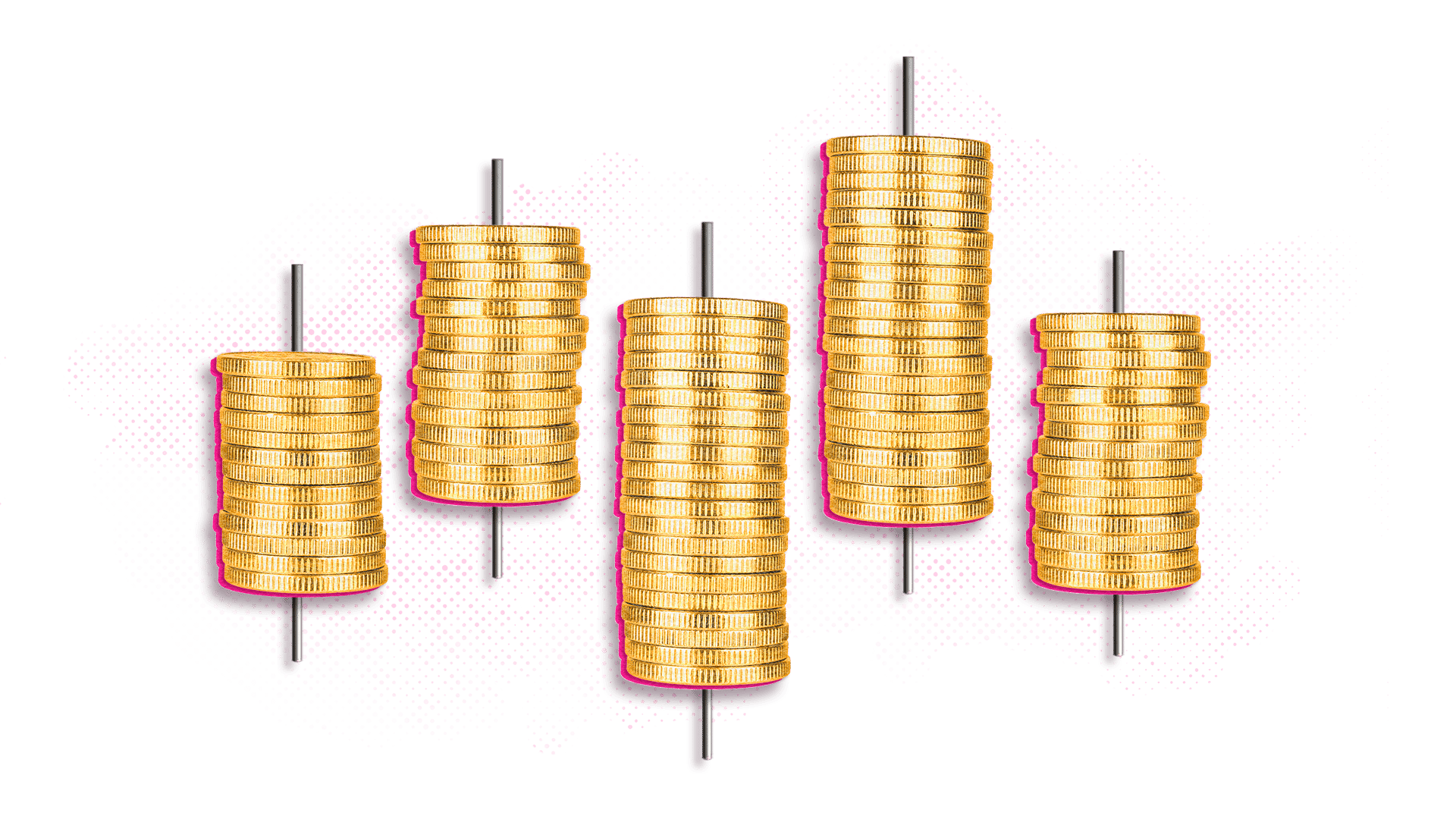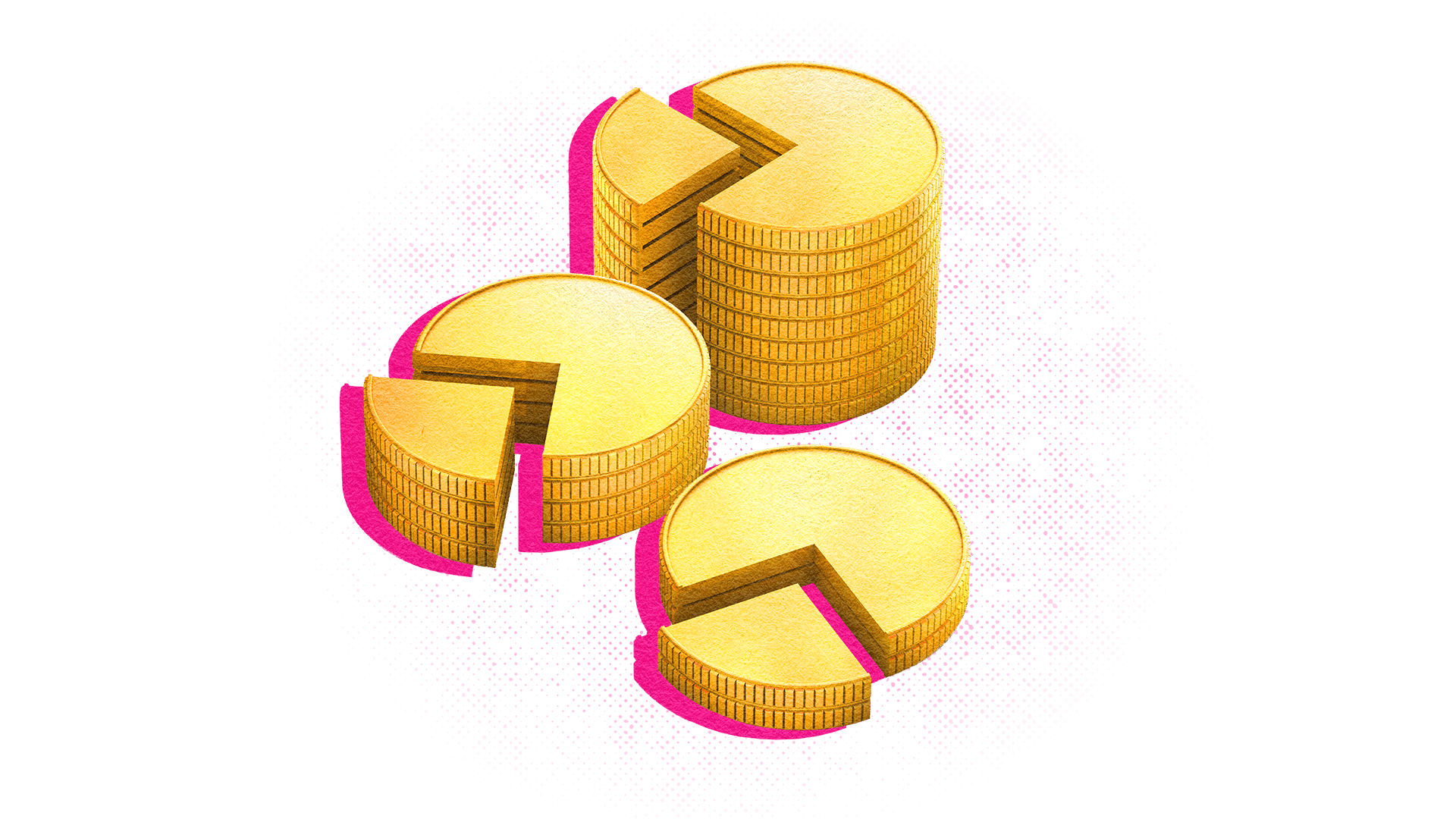There comes a time in everyone’s life when they start thinking about investing. Maybe you’ve just been hired at your first job and have a little more money to save, or maybe you and a partner are starting to think about houses and kids. Perhaps you’re a little older and feeling a bit more urgency to stash money away for retirement. Whatever the reason, at some point you’ll likely need to start thinking about ways to help grow your money.
While people have been investing for centuries — in companies, but also cattle, real estate and gold — markets can be confusing. A little education, though, can help you get going. Here are some investing basics to get you started.
What is investing?
Investing is the process of buying and holding certain assets for the purpose of generating a return, but most people think of it as an effective way to help grow their wealth.
Typically, investors own assets like stocks, bonds, mutual funds, Exchange-Traded Funds (ETFs), real estate or interest-bearing vehicles, such as Guaranteed Investment Certificates (GICs).
Investing is different from saving. While saving implies putting money away without any risk of financial loss, investing is about taking a measured risk by putting your money to work for a potential financial gain.
How do you make money from investing?
Capital gains and earned income are two of the most common ways to help generate a return from an investment asset. Capital gains are the return you get when you sell an asset for more than what you paid for it. But you can also receive earned income in the form of payments you receive from an asset as long as you own it.
There are different kinds of earned income, too, which can vary depending on the asset. Here are some examples:
- Interest generated by bonds and GICs
- Some stocks pay dividends, which are portions of the company’s profits paid out to shareholders
- Income paid out by funds and trusts in the form of distributions
- Rental income generated by real estate (commercial, industrial and residential)
Tax implications
While both capital gains and interest can generate wealth, there are other factors at play that can contribute to the overall performance of your investment portfolio. For instance, interest and rental income are taxable at your top marginal income tax rate, whereas capital gains and dividends from Canadian corporations are taxed at a lower rate.
If you hold your assets in a Registered Retirement Savings Plan (RRSP), you’ll only have to pay tax on your portfolio when you withdraw, ideally after you retire and your income rate is lower. You will pay tax if you withdraw earlier. If you hold your money in a Tax-Free Savings Account (TFSA), you won’t pay any tax on the gains you’ve earned in the account. You’re only subject to capital gains, income and dividend-related taxes if you hold investments in a non-registered account.
The benefits of investing
Investing can be an effective way to help put your savings to work and grow your wealth over time, contributing to your overall financial health. Here are a few other important benefits of investing:
-
Fighting inflation:
Growing your assets over time can help you keep pace with inflation — the ever-rising cost of living. As inflation rises, the depreciating value of your savings starts to erode your purchasing power. Investing your savings can be an effective way to help offset this effect.
-
Compounding:
One of the most effective ways to help grow your portfolio is to reinvest the income and capital gains you earn back into your portfolio. When you reinvest your gains into your portfolio, you can compound your returns — meaning you’re earning interest on your interest and dividends on your dividends. Compounding allows your wealth to grow exponentially over time.
-
Return on investment:
If you want to know how your investments are doing, you’ll want to look at your return on investment or ROI. Your ROI is the return on an investment relative to what you paid for it. This measurement can also help you compare different investments to see how they are contributing to your portfolio.
-
Financial stability and growth:
Saving is important, but it will only get you so far. Investing can help compound the growth of your money.
-
Small investments can go a long way:
Even if you don’t have a lot of money to spare, it can be effective to invest small amounts of money over long periods of time — for example, $200 a month or 5% off every paycheque. That way, you’re continually putting money into the market and allowing those dollars to compound year over year.
Types of investments
Each kind of investment has its own attributes that may suit some investors more than others.
-
Stocks
Stocks, also called equities, are shares in companies that trade on a stock exchange, such as the Toronto Stock Exchange or the New York Stock Exchange. These securities have historically generated some of the highest returns among the major asset classes. Stocks are highly liquid — meaning you can buy or sell them whenever stock markets are open — and they tend to have a greater risk than other assets because they can be volatile at times. With that in mind, they can be effectively utilized by those who have a longer time horizon. That way, there’s more time to recoup any losses.
-
Exchange-Traded Funds (ETFs)
An ETF is typically a pooled investment that trades like a stock on a stock exchange. They usually hold a basket of stocks, bonds or other assets. Some of the more popular ETFs replicate well-known indices like the S&P/TSX Composite or the S&P 500 (they hold a representative sample of the index’s stocks), rather than relying on a portfolio manager to select which stocks to hold. Moreover, because they don’t have a fund manager picking stocks, their fees tend to be lower than other pooled investments. Other types of ETFs invest directly in commodities like gold, oil or specific sectors. Like stocks, ETFs are liquid, but their risk vs. return profile will depend on the underlying assets they invest in.
-
Mutual funds
Mutual funds are like ETFs, only they don’t trade on an exchange. Instead, you can buy them directly from the fund company or an investment dealer. Generally, mutual fund portfolios are actively managed to identify risk and seek out companies that might improve the fund’s return. Index funds are another type of mutual fund, except they follow an index like many ETFs. Because index funds are passively managed, they tend to come with lower fees.
-
Fixed income
Bonds and treasury bills are essentially tradeable loans that pay you interest and mature on a set date. Upon maturity, the issuer repays your principal (the money you invested at the outset). Under most circumstances, bonds typically have a negative correlation to equities —that is, when one goes up, the other tends to go down — which adds important diversification benefits to a portfolio. However, holding individual bonds can be complex to research and purchase so many small investors prefer to invest in bond funds or fixed income ETFs.
-
Guaranteed Investment Certificates (GICs)
GICs are like savings accounts, only they pay higher rates of interest to compensate investors for committing their money for a fixed term. They can be good for conservative investors because the Canada Deposit Insurance Corporation guarantees the principal if the institution you are investing with somehow goes belly up. As well, their returns are always positive, even though their yield percentage may often be lower than other asset classes.
-
Options
Options are contracts to buy or sell stocks or commodities at a certain price on a certain date in the future. They can be traded with a brokerage account that permits options’ trades. The holder may opt to exercise the option if it becomes profitable or allow it to expire if it doesn’t. These are sophisticated financial instruments for investors who can manage their overall portfolio risk well and are willing to take a chance for big gains.
-
Other assets
Other assets capable of generating a return include things like investment property, precious metals, cryptocurrency, vintage wine or even fine art. Many of these can’t be held in an investment account or a registered account like an RRSP.
Saving vs. investing
It’s important to understand the distinction between these two related activities.
Saving is the habit of spending less than you earn and setting aside the difference for a future purpose or goal. When you were younger, you may have kept your savings in a piggybank or a savings account at a bank. In either case, your money may have earned a small amount of interest — but likely not enough to keep pace with inflation.
Investing is a more proactive way to help grow your savings and build wealth over time. By taking on slightly more risk and buying stocks, bonds and other higher-earning assets, you can increase your rate of return over an extended period. Consider that if you average a 5% annual rate of return, compounded, you will double your money every 14 years — that’s a big step up from a savings account.
Savings account vs. Registered savings account
Savings accounts are just that, accounts where you park your money for easy access and every-day expenses or to save for short term goals. Occasionally, these accounts will pay interest on your savings, although the amounts are usually low and taxable. Registered accounts, on the other hand, offer special tax advantages that encourage you to save and invest. There are several types of registered accounts, and while each has its own set of rules, they all can help you accumulate wealth faster. They include:
- Registered Retirement Savings Plan (RRSP)
- Registered Retirement Income Fund (RRIF)
- Registered Education Savings Plan (RESP)
- Registered Disability Savings Plans (RDSP)
- Tax-Free Savings Account (TFSA)
- First Home Savings Account (FHSA)
You can read more about registered and non-registered accounts.
Investment risk
Investment risk is the possibility of losing some or all of your invested capital. Generally speaking, investments with high historical returns come with high levels of risk, and those with low returns, low risk. Here are some specific risks to be aware of:
- Market volatility: Assets such as stocks, bonds and real estate sometimes decrease in value due to market sentiment and adverse economic conditions.
- Fees and commissions: Some investments come with fees that eat into your returns.
- Holding period: Some investments (e.g., GICs, private equity funds) have specific lock-in periods where you may not have access to your funds.
- Investor knowledge: Poor understanding of investments can increase the possibility of inappropriate portfolio choices and fraud.
Investment risk tolerance
Your investment portfolio should match your personal risk tolerance. That is, how much of a potential loss you are willing or able to accept for the chance to help earn a higher return. People uncomfortable with a 20% loss in any one year may want to have a lower allocation to stocks and a higher allocation to fixed-income holdings such as bonds, bond funds and GICs. Those who have a longer time horizon — people in their 30s saving for retirement, for example — can usually afford to take on more risk and, most likely, earn a higher return with a large allocation to equities.
There are three main risk tolerance levels:
- Conservative: You would rather accept lower returns for the peace of mind knowing your money is safe.
- Moderate: You are ok with some risk that may cause your portfolio to move up and down, but you feel uncomfortable with large losses.
- Aggressive: You have a long time horizon and are willing to accept greater volatility in your portfolio for the chance to help earn higher returns.
What is diversification in investing?
You can reduce overall portfolio risk by holding many different types of investments with differing characteristics. If you diversify the industry sectors your stocks are in and the countries where they operate, you may reduce risk even further. The same goes for owning government or corporate bonds ranging from mere months to maturity, to 30 years.
Investing tips
- Start early. Small amounts can grow surprisingly large over 40 years, thanks to compounding.
- Set a goal. It could be retiring with a million dollars or saving up for a down payment on a home in a TFSA.
- Saving comes first. You can’t invest if you spend all your paycheque. Make saving a part of your budget so you can contribute regularly.
- Know the risks before you buy an investment. Ask yourself, “What’s the worst that could happen?” Adjust your strategy if the answer unnerves you.
- Be smart about commissions. Get to know the fees you’re paying to acquire, hold and sell investments so they don’t affect your investment returns.
![]()
Frequently asked questions (FAQs)
How can I invest if I have no money?
Make setting aside part of your paycheque a regular habit. You can get started with any amount with TD Direct Investing.
Do you get taxed every time you sell a stock?
The simple answer is no. If you sell a stock for a loss, then you will not have to pay tax on that loss if it’s sold within an unregistered account. However, if you sell stock in an unregistered account for a capital gain, you will incur tax in that calendar year. Small investors who hold stocks in a registered account such as an RRSP or TFSA, which can defer or eliminate any taxes payable, no matter how often they buy or sell stocks held within those accounts.
How do beginners invest?
Some investors might consider starting with something simple, such as opening a GIC account, and then branching out as you learn more. If you choose to open a TD Easy Trade™ account, it provides 50 commission free stock trades a year per client. You can also sign up for a live Easy Trade™ Learning Lab session to help level up your investing skills.
What causes investment risk?
Risk comes from all corners, from your own biases or lack of knowledge right up to macroeconomic factors like rising global interest rates.
Here are five examples of financial risk:
- Market volatility
- Inflation
- Portfolio concentration (having all your eggs in one basket)
- Business failure or bankruptcy
- Loan default
Can a student invest in Canada?
Yes, as long as they have money to invest. Until children turn 18, their brokerage and mutual fund accounts must be held in trust by a parent or guardian.
Is investing a good idea for students?
Yes! Once you finish school, you’re likely going to have expenses like moving, buying a car or renting an apartment. Having a TFSA or unregistered investment account to fall back on can really help. If you have income from a part-time job or a gift from relatives, you can put it to work.
What is a registered savings account in Canada?
A registered savings account receives preferential tax treatment from the Canadian Revenue Agency. Registered accounts come in a handful of formats. One account that is simple and applicable to most investors is the TFSA, which allows you grow your investments tax free.
What’s your investor IQ?
Learned something new today? Test your growing knowledge of investing for beginners with MoneyTalk’s personal finance quiz.








